The former capital is not only flashing in salons and crimes in white gloves. Real crimes were born out of poverty, in neighborhoods that were feared even during the day. Even the children raised by fathers-robbers and mothers-prostitutes could not be trusted.
In the early 1930s, an investigative reporter with the unidentified initials J.J. decided to prepare material about the thieves' havens in Mirów in Warsaw. It took a lot of courage. Even today, when the area is practically in the city center, it is still not fully tamed. In the interwar period it was so dangerous here that the name of the Wild West stuck to Mirów. It lasted long after the war.
Life on the edge at ul. Harda
J.J. first he visited the apartment of a certain thief on Twarda Street. The neighborhood was quite shady. A dozen or so years later, in September 1944, it was here that the only truly terrible crime took place during the Warsaw Uprising. It was carried out by the local Home Army soldiers who murdered and plundered several Jews of both sexes, including children.
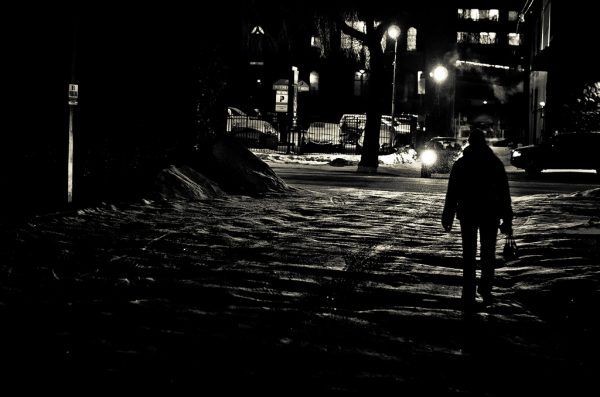
One of the most dangerous areas in former Warsaw was Twarda Street, pictorial photo (source:Kurt Bauschardt, CC BY-SA 2.0).
Meanwhile, however, the Jews lived here in full symbiosis with the local underworld. One of them, J.J. he even met in the den to which he went without finding the thief he was looking for at home. His description of this place blatantly reflects the reality of the criminal life in the interwar period:
Even in the corridor, thick dirt sticks to the legs, some unpleasant smell of strange mustiness irritates the nostrils . In the den, owned by the wife of a thief in prison, prostitutes are always hosted. (...) On the first side of the bed is a young couple - a married couple not registered here, although they have been living there for a few days.
The wife goes to the streets to earn money, the husband, a thief, by the way, lives off his wife's income. (...) In the second room, the daughter of the owner of the premises, half undressed, next to it, a man aged around 28 . In front of him, a prostitute from Twarda Street is a guest here at the moment (...).
With a sticker and gun in hand
The descriptions of the Warsaw interwar period are dominated by a positive and sentimental message. At one pole of it, Wieniawa-Długoszowski and the Skamandrits shine in numerous cabarets. On the second, there are criminals, but some in tailcoats - elegantly, wearing white gloves, opening bank safes. And if there is a real cap with a sticker in hand, it is one straight out of Wiech or Grzesiuk. Cunning, characterful boy, maybe a bully, but honorable and nice at all.
The reality was completely different and much closer to the description of the hiding place in Twarda Street. Most of the criminal life of the interwar period was submerged in filth and poverty. The set:husband-bandit and wife-prostitute did not surprise anyone. Only their shared income was sufficient to support them. Children also added to the budget as soon as they grew up enough to be able to continue the family business. The process of inheriting the trade from parents is described in a visual manner by the hero of Łukasz Stachniak's book "Black Character":
As we were little, we could have used an even smarter procedure. The Saski Garden, located in the very heart of the city, turned into a run for the youngest inhabitants of the capital on clear days. The bytes were led there by the service, babysitters or other vouchers, and in organized kindergarten and even nursery groups. The two of us, impeccably dressed, were obliged to blend in with the crowd of toddlers and conduct a detailed interview on the subject of their parents' wealth.
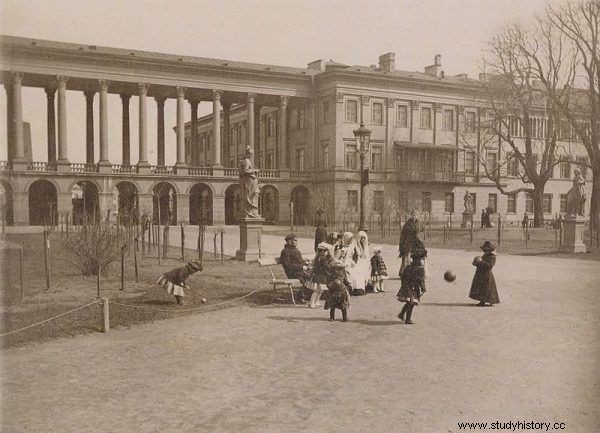
Searching for potential victims among the richest walkers in the Saski Garden? For thieves, every way was good (source:public domain).
For generations brought up in such conditions, crime became something natural. It did not take long for crime to skyrocketed. In recent times, victims of bloody assaults and knife trials are falling almost every day - he reported on the state of the streets of J.J. His report is not dated, but the statistics speak for themselves. Even in the relatively quiet year of 1929, 969 robberies were officially recorded in Warsaw. That's roughly three every day! Earlier, in 1924, there were as many as twice as many.
Scary neighborhoods
Why such intimidating statistics? Explain them quite easily. After World War I, Polish society was heavily militarized. Already during the revolution of 1905, almost 10,000 armed and very dangerous fighters - revolutionaries - were on Polish territory. After regaining independence, when poverty reigned, the popular "bronki" (browning pistols) were used for profit. And they also returned to them later, in the 1930s, when the first effects of the Great Depression began to be felt.
Of course, it wasn't as dangerous everywhere. You could walk around Nowy Świat in Warsaw, Krakowskie Przedmieście, Saska Kępa and even the newly built Żoliborz and most of Mokotów without fear. Apart from them, however, it was sometimes different. Czerniaków, Powiśle, old and new Praga, Bródno and Targówek gave a high probability of losing your wallet, and sometimes even your life. It was also not worth venturing west, especially Wola, Jewish Nalewki and Muranów.
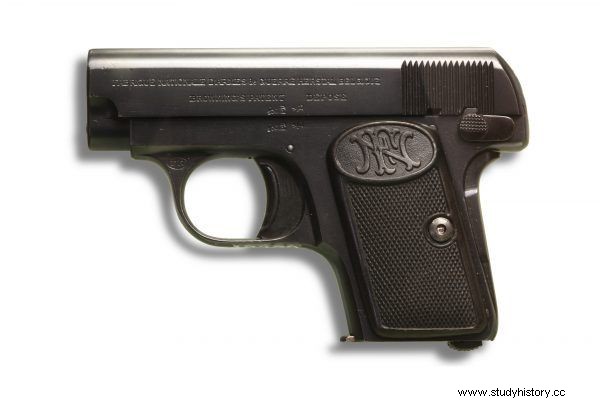
The browning pistol, popular in the interwar period, was often used for evil purposes (source:Henri Guisan, CC BY-SA 2.0 FR).
Contrary to appearances, these districts did not have long criminal traditions. Until recently, in many cases these were ordinary villages. They began to develop and gravitate towards the city only in the declining phase of the partitions. Until the beginning of the 20th century, Wola was an ordinary, small village, which was part of the food base of the city. It was only the gradual industrialization that changed the character of this and other districts that followed.
Rural huts gave way to dingy hovels already at the time of construction. There were also migrant workers. Who did not necessarily find a job in the new city. As early as 1918, the number of the unemployed reached 100,000. In 1921 it was even worse - statistically, out of 100 workers, only 42 had jobs.
In addition, in Wola, the so-called "residence-keepers" were still imprisoned during the tsarist regime. They were common criminals and recidivists. As they were not allowed to leave the district, they practiced their practice in the district. And this was how the specific microclimate of the district was gradually developing. It was almost a city within a city. There were places in Wola where the police did not look, and the gangsters themselves cared for "justice".
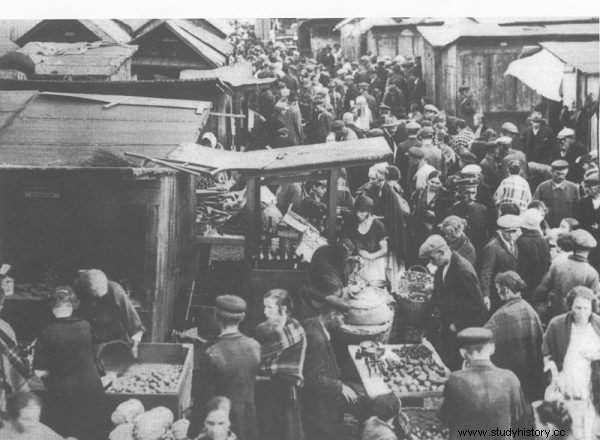
Tasiemka ruled, among others, in the Warsaw Kercelak (source:public domain).
The loudest of them was Tata Tasiemka, that is Łukasz Siemiątkowski. He was a criminal with an exceptionally strong back. As a distinguished Piłsudczyk, he became a member of the Warsaw City Council and was practically untouchable by the police. For years, he extorted racketeering with impunity, terrorized merchants from Kercelak (a marketplace in Wola) and sat in gangster dintoyrs. It may not sound too bloody, but the truth was that whoever did not want to pay, died. If he paid too little, his families were beaten and raped.
Crimes as part of everyday life
In 1932, Tasiemka was finally brought to trial. The sentence he received was not large, and his sentence was only a few days, but it was enough to make him lose his support both in the world of politics and in the gangster underworld. But the district, even without Siemiątkowski, has not lost its character. Beatings, robberies and murders were commonplace, and the detection of the perpetrators - negligible.
Just a glance at a few small press reports is enough. And so, on June 1, 1932, there was an almost simultaneous attack of cutters on Wolska Street, attacks on Okopowa Street and in the Old Town (the housekeeper was the victim here) and a revolver attack on Młynarska Street.

You can read about the dubiously famous Tasiemka in the book "Black character" by Łukasz Stachniak.
On the same day, a shooting also took place near the Gdańsk Railway Station, where "a few drunk passers-by" used their weapons. Five bullets fired. Only one, and in addition to the ceiling, was fired in Czerniaków. Three men - it was written in the press - broke into the coal depot at 189 Czerniakowska Street . The owner, a certain Cichocki, turned out to be armed.
The fact of committing several crimes at the same time was by no means a peculiarity in Warsaw. In mid-April, a 26-year-old Bronisława B., a resident of Wola Street in Płocka, informed the police about the rape of her person by Maksymilian Wesołowski. When the act took place, in Ochota, specifically in the Lubecki colony, several unknown individuals attacked the returning home worker, Piotr Ukołów. He was beaten unconscious. The police patrol found the victim and transferred him to the 5th police station, where an ambulance doctor summoned him treated 7 wounds to his back and 2 heads - the newspapers reported.
Meanwhile, in Powiśle, the Union of Lower State Officers was broken into. From there, they broke through to the Textile Factory at 3 Maja Avenue. And on the other side of the Vistula? The door of Aleksander Żebrowski's apartment in the tenement house at Ząbkowska was just pushed through.
Poverty breeds poverty
As you can see from these few examples, things like in Wola happened in exactly every working-class district of Warsaw. Professional break-ins were rare. Much more often there were simply bloody fights, sometimes for the purpose of robbery, sometimes for draki, and sometimes because of lesser gangster activity. At one point, the so-called porters' gang became known in particular. The use of his "services" has become virtually compulsory.

It is hard to believe that this is how the unemployed inhabitants of Warsaw's Żoliborz lived in the past (source:public domain).
The cause of crime in working-class neighborhoods was the same everywhere. There was extreme poverty in them, and after the partitions they inherited a general aversion to the police. The housing conditions were as bad - if not worse - as in the description by J.J. the den on Twarda Street.
But there were also places where working-class neighborhoods could seem almost a haven of security and luxury. The real Warsaw slums are:Podskarbińska in Grochów, barracks in Żoliborz, Moczydło, but most of all Annopol. Hundreds of families lived there in barracks built during World War I. This is how Łukasz Stachniak describes them:
As many as one hundred and fifteen barracks were built in the colony there, of which only two were for chackers. Low, dark, no stairs - it was impossible to put up cheaper ones. Rustic streets in Paris, like rays, all met in one square. Annopolska barracks people called it Frying pan
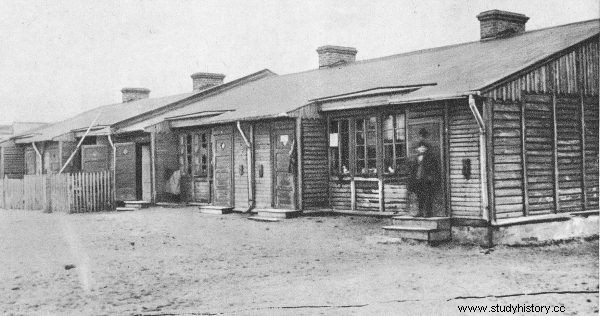
The barracks in Annopol looked no better before 1939…. (source:public domain).
Jerzy Gieysztor, who lived nearby (near Targówek), was also impressed by the conditions in which the Anopolska families lived. It depicted a neighborhood where prostitution flourished, thieves abounded, alcoholism and disease were rampant. Annopol, as he wrote, was a district of human hopelessness, the bottom of urban poverty, where the police chased out 13-14-year-old girls and unscrupulously marked them with black books . His account was supplemented in 1938 by the writer and reporter, Elżbieta Szemplińska-Sobolewska:
Annopol cannot be seen from downtown. This poverty is localized like the plague. taken to the middle of nowhere. Set on the sands. Devoid of teeth and claws. Such a poverty to watch, demonstrative, clinical, included in a system, as safe as the animals on the reserve, poisoning only itself with its venom. Poverty without comparison and contrast. Hopeless
About 11,000 unemployed lived in 113 wooden barracks. It happened that over thirty people slept in one small room! Under such conditions, murder, rape and theft were the norm rather than something special, although in truth it is difficult to imagine what could have been stolen from these people. In any case, no one was looking for the perpetrators, and no one kept any statistics. These were really bad neighborhoods.
